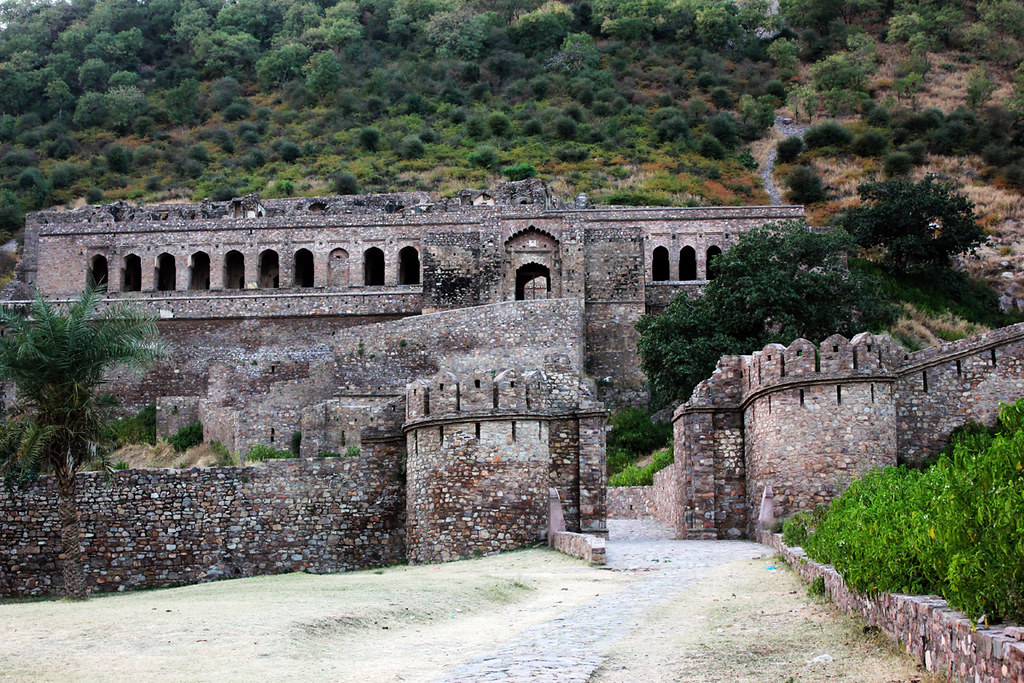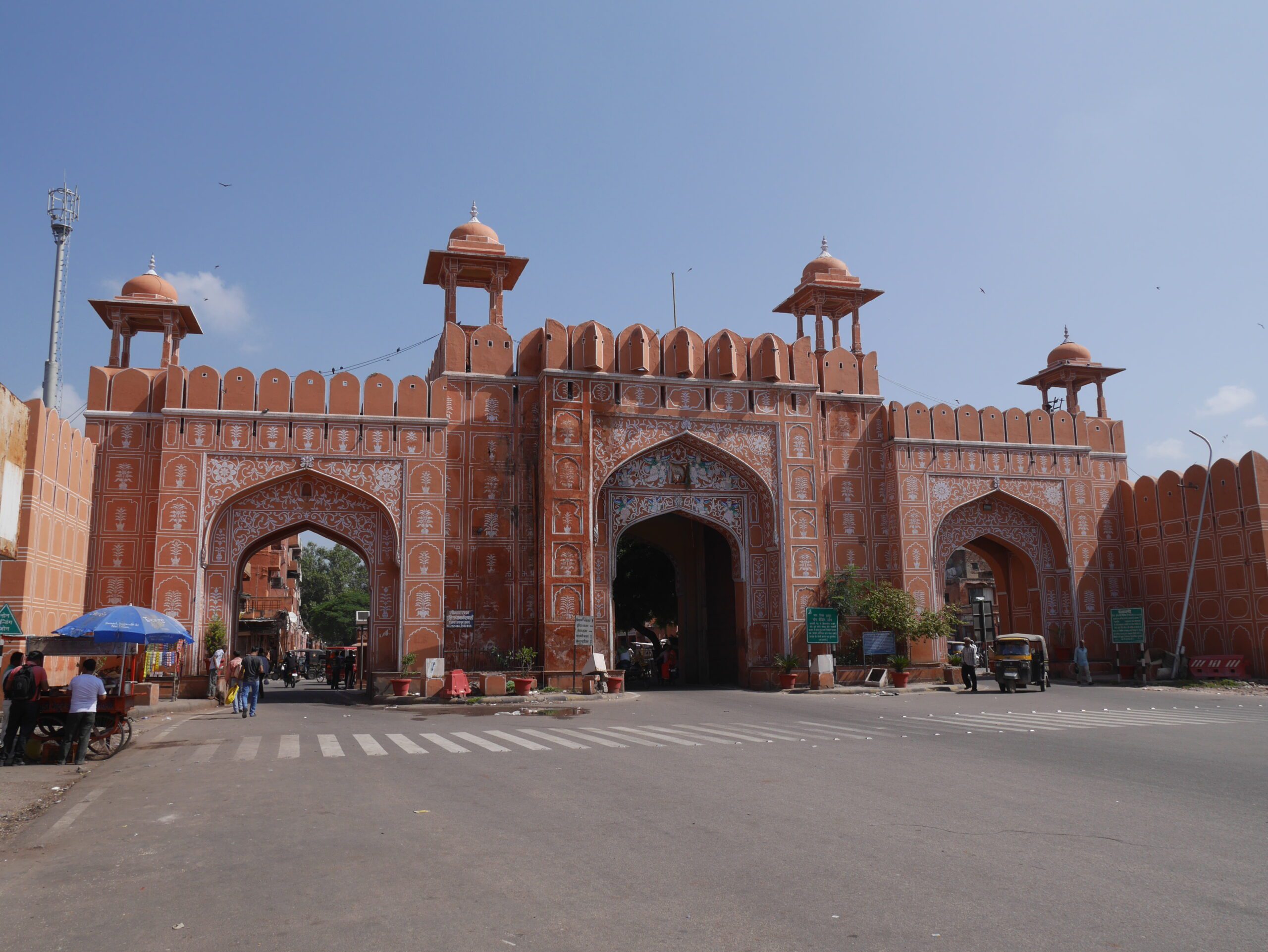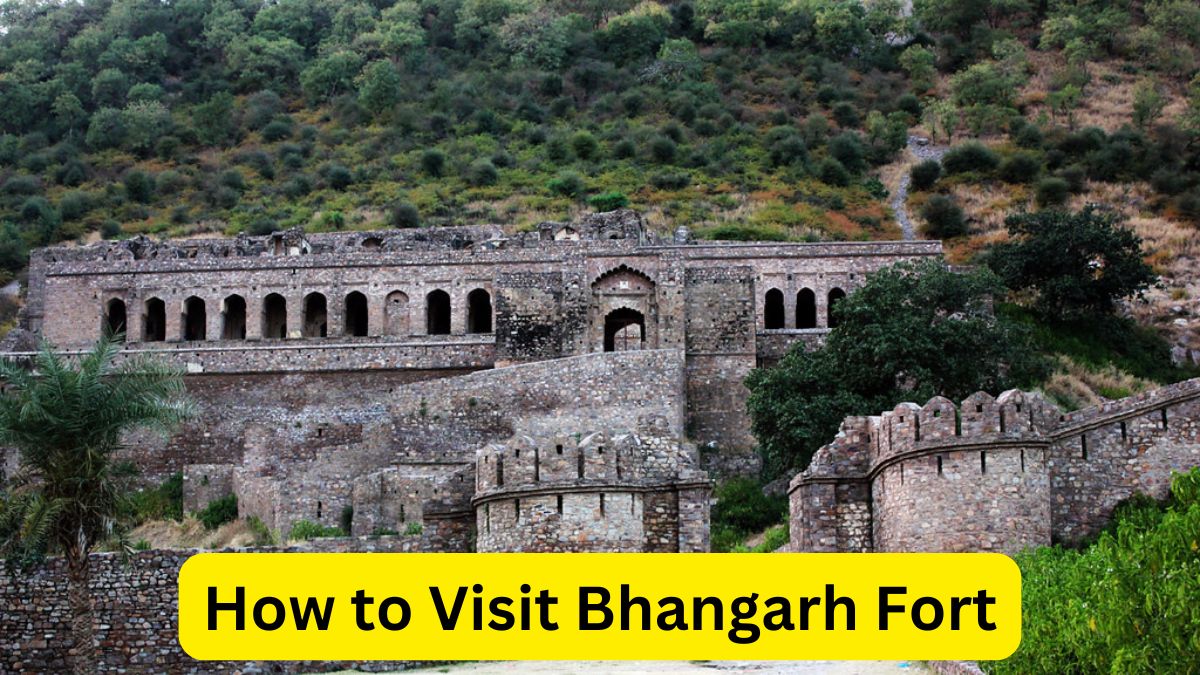

How to Visit Bhangarh Fort
How to Visit Bhangarh Fort: Visiting Bhangarh Fort is like stepping into a world where history, mystery, and folklore intertwine to create an experience that’s both thrilling and deeply fascinating. Nestled in the Alwar district of Rajasthan, Bhangarh Fort is renowned not just for its historical significance but also for its eerie reputation as one of the most haunted places in India. But beyond the spooky legends, this fort is a masterpiece of medieval architecture, surrounded by the rugged beauty of the Aravalli hills. Whether you’re drawn by the supernatural stories or the historical allure, Bhangarh Fort offers a unique adventure that’s worth the journey. In this blog, we’ll guide you through everything you need to know about how to visit Bhangarh Fort, ensuring that your trip is as smooth and enjoyable as it is memorable.
Table of Contents
1. Understanding Bhangarh Fort’s History and Legends
Before you set off to explore Bhangarh Fort, it’s important to immerse yourself in its rich history and the intriguing legends that have made it famous.
1.1 The Historical Background:
Bhangarh Fort was established in the 16th century by Raja Bhagwant Das, a ruler of Amber, for his younger son, Madho Singh I. The fort was once a thriving town, complete with markets, temples, and palaces, reflecting the prosperity of the era. However, the town’s fortunes took a mysterious turn, leading to its abandonment and the rise of the legends that surround it today.
1.2 The Legends:
The most popular legend associated with Bhangarh Fort involves a powerful wizard named Singhia, who fell in love with the beautiful Princess Ratnavati of Bhangarh. Singhia, an expert in black magic, tried to cast a spell on the princess to win her love. However, the princess saw through his scheme and thwarted it, leading to the wizard’s death. Before he died, Singhia cursed the town, leading to its downfall. Locals believe that the spirits of those affected by the curse still haunt the fort, which is why it has earned its reputation as one of the most haunted places in India.
2. Planning Your Visit: Best Time and How to Get There
Now that you have a sense of the fort’s background, let’s get into the logistics of planning your visit.
2.1 Best Time to Visit:
The best time to visit Bhangarh Fort is during the cooler months, from October to March. During this time, the weather is pleasant, making it ideal for exploring the fort and the surrounding area. Rajasthan’s summers can be extremely hot, with temperatures soaring above 40°C, so it’s best to avoid visiting during April to June unless you’re prepared for the heat. The monsoon season (July to September) brings moderate to heavy rainfall, which can make the terrain slippery, but it also lends a lush green beauty to the region, creating a different kind of charm.
2.2 Getting to Bhangarh Fort:
- By Air: The nearest airport is Jaipur International Airport, located about 85 kilometers away. Jaipur is well connected to major cities across India and a few international destinations. From Jaipur, you can hire a taxi or rent a car to drive to Bhangarh Fort.
- By Train: The closest railway station to Bhangarh is in Dausa, about 30 kilometers from the fort. Dausa is a small station, so you might have to change trains at Jaipur, which has better connectivity. From Dausa, you can take a taxi or a local bus to reach Bhangarh.
- By Road: Bhangarh is easily accessible by road. If you’re traveling from Delhi, it’s about a 4-5 hour drive (approximately 280 kilometers). From Jaipur, the fort is about a 2-hour drive. The roads are generally in good condition, and the drive through the Rajasthani countryside is quite scenic.
3. Entry Details and Timings
Bhangarh Fort is managed by the Archaeological Survey of India (ASI), and there are specific guidelines and timings that visitors must adhere to.
3.1 Entry Fees:
The entry fee is minimal, making it accessible to all:
- For Indian Citizens: ₹25 per person
- For Foreign Nationals: ₹200 per person
If you’re carrying a camera or video equipment, there might be an additional fee, so it’s best to check with the authorities at the entrance.
3.2 Timings:
The fort is open to visitors from sunrise to sunset, typically between 6:00 AM and 6:00 PM. It’s important to note that visitors are strictly prohibited from entering the fort after sunset, a rule enforced by the ASI due to the fort’s haunted reputation and for safety reasons. Make sure to plan your visit so that you have ample time to explore the fort during daylight hours.
4. What to Expect: Exploring the Fort
Bhangarh Fort is an expansive complex, and there’s much to see and discover. Here’s how you can explore the fort to make the most of your visit.
4.1 The Entrance and Main Gate (Ajmeri Gate):
Your journey into Bhangarh begins at the Ajmeri Gate, one of the four main entrances to the fort. As you walk through this grand gateway, you’ll be transported back in time. The path leading from the gate is lined with ruins of old markets, homes, and temples, giving you a sense of the bustling town that once existed here.


4.2 The Marketplace (Johari Bazaar):
Just beyond the entrance lies the Johari Bazaar, which was once the main marketplace of Bhangarh. Today, it’s a hauntingly beautiful area, with the remains of shops and homes that tell tales of a prosperous past. As you walk through the bazaar, it’s easy to imagine the traders and buyers who once filled this area with life.
4.3 The Temples:
Bhangarh Fort is home to several temples that are surprisingly well-preserved compared to the other ruins. Some of the most notable ones include the Gopinath Temple, dedicated to Lord Krishna, and the Someshwar Temple, dedicated to Lord Shiva. These temples are adorned with intricate carvings and are considered safe havens within the fort, as they are believed to be protected from the curse.
The Someshwar Temple is located near a small pond and offers a tranquil spot where you can take a moment to relax and reflect. The presence of water, combined with the spiritual ambiance of the temple, provides a serene contrast to the fort’s otherwise eerie atmosphere.
4.4 The Royal Palace:
At the heart of the fort lies the Royal Palace, a multi-storied structure that once served as the residence of the ruling family. Although much of the palace is in ruins, you can still explore its courtyards, chambers, and balconies. The view from the top of the palace is breathtaking, offering a panoramic view of the entire fort complex and the surrounding landscape.
The Royal Palace is said to have been the home of Princess Ratnavati, the central figure in the legend of Bhangarh. As you explore the deserted halls and crumbling walls, it’s easy to see why this place has become a focal point of the fort’s ghost stories.
4.5 The Chhatris and Other Ruins:
Scattered around the fort are several chhatris (cenotaphs) and smaller structures that add to the fort’s haunting beauty. These chhatris, with their domed roofs and intricate carvings, stand as silent memorials to the fort’s past. Don’t forget to explore these smaller, often overlooked areas, as they offer unique photo opportunities and a deeper connection to the fort’s history.
5. The Paranormal Aspect: Myths and Experiences
Bhangarh Fort is best known for its reputation as one of the most haunted places in India. While the stories of ghosts and paranormal activity may be exaggerated, they are an integral part of the fort’s allure.
5.1 The Haunted Reputation:
Locals and visitors alike have reported strange occurrences at the fort, especially after dark. These include eerie sounds, such as cries, whispers, and footsteps, as well as sudden drops in temperature and the feeling of being watched. While there’s no scientific evidence to support these claims, the stories persist, adding to the fort’s mystique.
5.2 The Forbidden Night Stay:
One of the most well-known rules about visiting Bhangarh Fort is that no one is allowed to stay inside the fort after sunset. This rule is strictly enforced by the ASI, and there are signboards at the entrance warning visitors of the dangers of staying inside after dark. Whether you believe in the supernatural or not, it’s best to respect this rule for your safety and peace of mind.
5.3 Visitors’ Experiences:
Many visitors have shared their experiences of feeling uneasy or sensing a presence while exploring the fort. Some claim to have seen apparitions, while others report feeling sudden chills or hearing unexplained noises. While these experiences can’t be verified, they certainly add an element of excitement and thrill to your visit.
6. Safety and Precautions
While Bhangarh Fort is a fascinating place to explore, it’s important to keep safety in mind, especially given its remote location and haunted reputation.
6.1 Respect the Rules:
The most important rule to remember is not to stay inside the fort after sunset. This is not just for paranormal reasons but also for your safety, as the fort can be treacherous to navigate in the dark.
6.2 Travel in Groups:
If possible, visit the fort with a group of friends or family. Exploring in a group adds to the fun and ensures that you’re not alone
in case of any unexpected situations.
6.3 Stay Hydrated:
Rajasthan can be hot and dry, even in the cooler months, so carry plenty of water to stay hydrated. There are limited facilities near the fort, so it’s best to come prepared.
6.4 Wear Comfortable Shoes:
The terrain around Bhangarh Fort can be uneven and rocky, so wear sturdy, comfortable shoes that can handle a bit of rough walking. This will make your exploration more enjoyable and prevent any unnecessary slips or falls.
6.5 Be Mindful of Wildlife:
The area around Bhangarh Fort is home to various wildlife, including monkeys and occasionally snakes. Keep a safe distance from any animals you encounter, and be cautious when walking through overgrown areas.
7. Photography Tips
Bhangarh Fort is a photographer’s paradise, offering endless opportunities to capture stunning images of ruins, landscapes, and architectural details.
7.1 Early Morning Light:
The best time for photography at Bhangarh Fort is early in the morning when the light is soft and golden. The fort’s structures and the surrounding hills look particularly beautiful in the morning light, and you’ll also avoid the crowds that arrive later in the day.
7.2 Wide-Angle Shots:
Given the vastness of the fort complex, a wide-angle lens is ideal for capturing the entire scene. Whether it’s the grand entrance, the sprawling marketplace, or the panoramic views from the palace, a wide-angle shot will help you capture the full grandeur of Bhangarh.
7.3 Focus on Details:
While the fort’s overall architecture is impressive, don’t forget to focus on the smaller details as well. The intricate carvings on the temples, the weathered stone of the walls, and the play of light and shadow in the ruins can make for captivating close-up shots.
7.4 Play with Shadows:
The fort’s architecture creates fascinating shadows, especially in the early morning and late afternoon. Use these shadows to create dramatic effects in your photos, highlighting the fort’s mysterious and eerie atmosphere.
7.5 Capture the Landscape:
The Aravalli hills surrounding Bhangarh Fort offer a stunning backdrop to your photos. Don’t forget to capture the beauty of the landscape, which adds to the fort’s allure. Panoramic shots from the top of the Royal Palace are particularly breathtaking.
8. Nearby Attractions: What Else to See
If you have time, consider exploring some of the nearby attractions to make the most of your trip to Bhangarh.
8.1 Ajabgarh Fort:
Located just a few kilometers from Bhangarh, Ajabgarh Fort is another historical site worth visiting. Though not as famous as Bhangarh, Ajabgarh offers its own share of legends and beautiful views of the surrounding countryside.
8.2 Sariska National Park:
If you’re a nature lover, a visit to Sariska National Park is a must. Located about 40 kilometers from Bhangarh, this wildlife sanctuary is home to tigers, leopards, deer, and a variety of bird species. It’s a great place to unwind after the intensity of Bhangarh Fort.
8.3 Bala Quila (Alwar Fort):
About 50 kilometers from Bhangarh, Bala Quila is an ancient fort perched on a hill in Alwar. The fort offers panoramic views of the Alwar city and the surrounding area, and its history and architecture make it a fascinating place to explore.
8.4 The Haunted Kuldhara Village:
If you’re intrigued by haunted places, consider a visit to the abandoned village of Kuldhara, located about 200 kilometers from Bhangarh. Like Bhangarh, Kuldhara is shrouded in mystery and legends, and its eerie ruins make for an interesting day trip.
9. Wrapping Up Your Visit: Final Thoughts
Visiting Bhangarh Fort is not just about ticking off a spooky destination from your travel list. It’s about immersing yourself in a place where history and legend converge to create an atmosphere unlike any other. Whether you’re drawn by the ghost stories, the historical significance, or simply the desire to explore a beautiful ruin, Bhangarh Fort promises an experience that’s as unique as it is unforgettable.
So, prepare yourself for an adventure that will take you deep into the heart of Rajasthan’s mysteries. Explore the ruins, soak in the history, capture the beauty, and maybe, just maybe, feel the presence of the past whispering through the walls.
